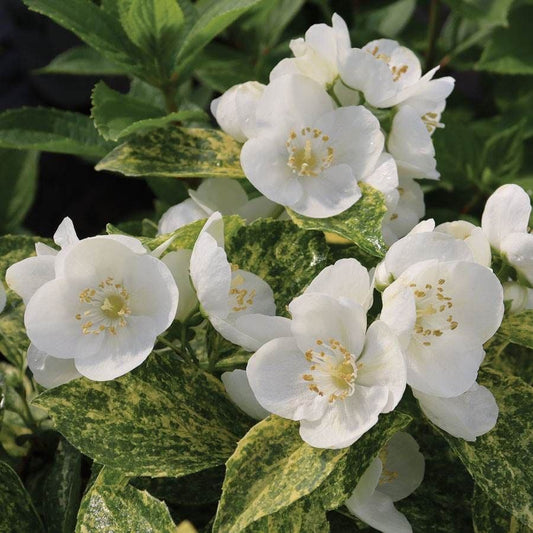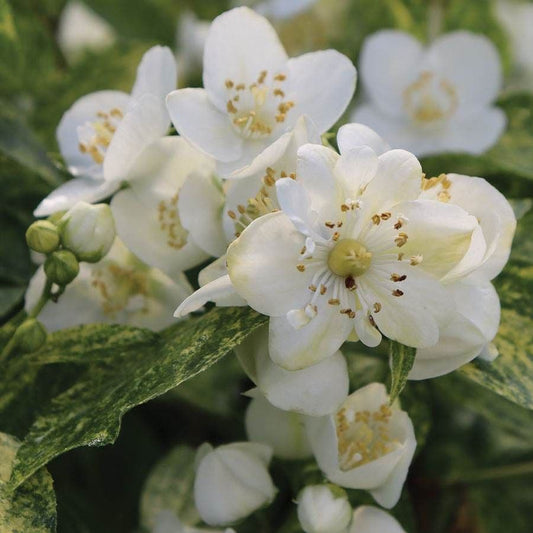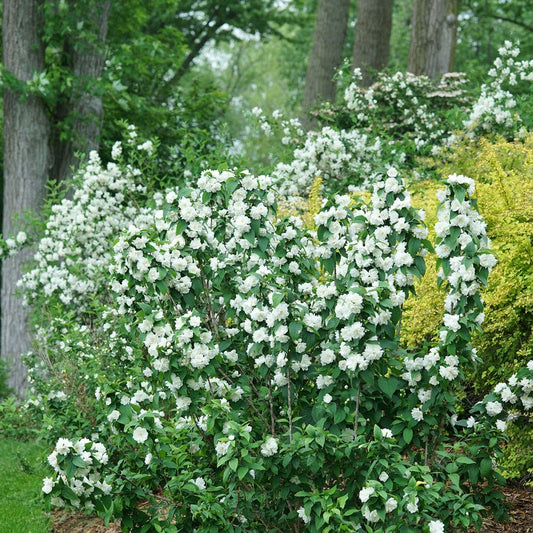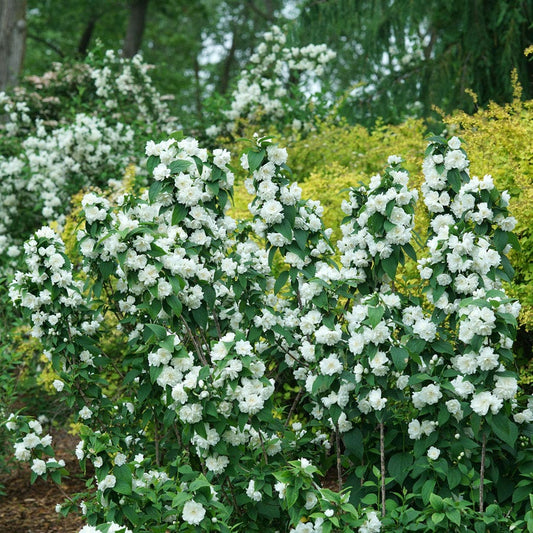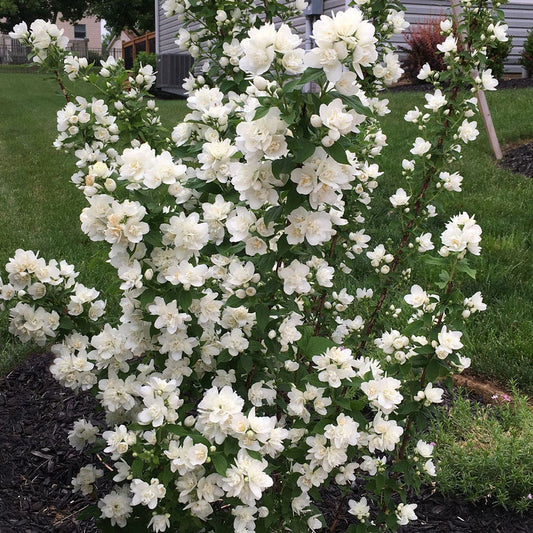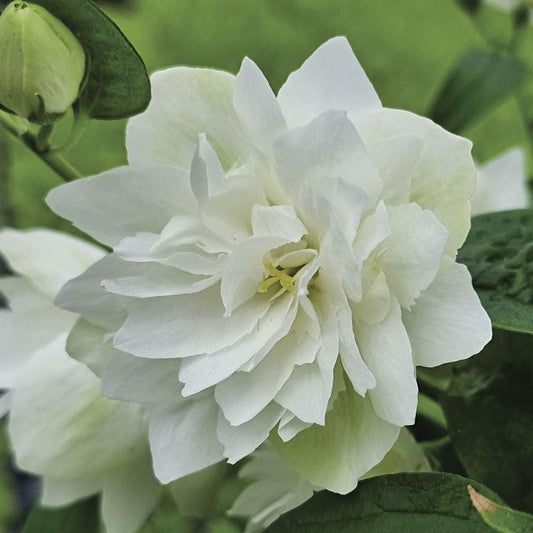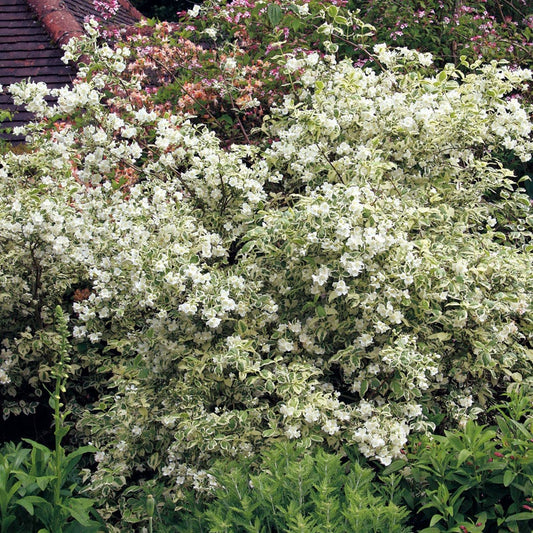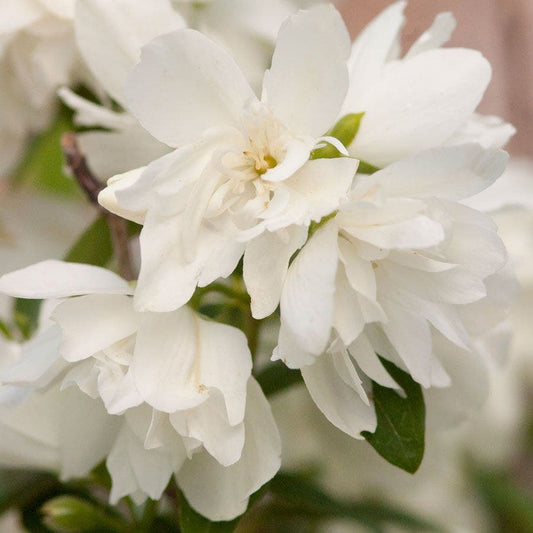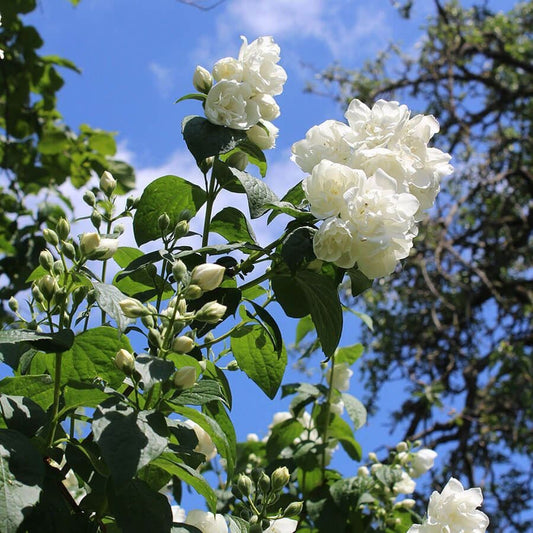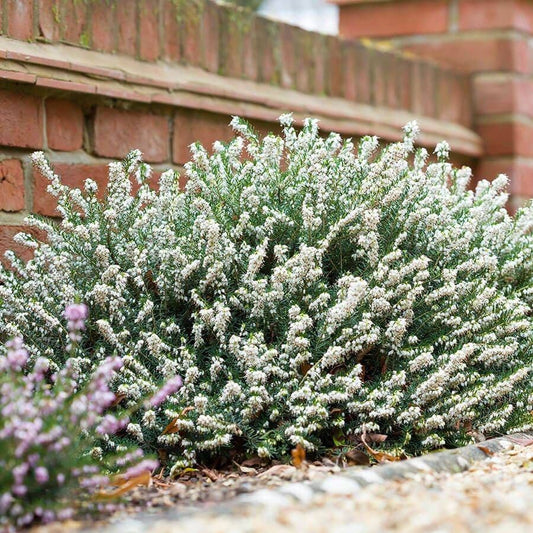Mock Orange Bushes & Shrubs
Sweet-scented Mock Orange shrubs are a springtime treasure. Dive into its fragrant beauty and explore its role in garden design, infusing your outdoor space with its delightful aroma.
-
Philadelphus Illuminati Sparks™
Regular price $28.95Regular priceUnit price per$28.95Sale price $28.95 -
Philadelphus Illuminati Spice™ Mock Orange
Regular price $24.95Regular priceUnit price per$24.95Sale price $24.95 -
Philadelphus Pearls of Perfume Mock Orange
Regular price $30.95Regular priceUnit price per$30.95Sale price $30.95 -
Philadelphus 'Minnesota Snowflake'
Regular price $38.95Regular priceUnit price per$38.95Sale price $38.95Sold out -
Philadelphus 'Snowbelle' Mock Orange
Regular price $39.95Regular priceUnit price per$39.95Sale price $39.95Sold out -
Philadelphus 'Buckley's Quill'
Regular price $35.95Regular priceUnit price per$35.95Sale price $35.95Sold out
Mock Orange Bushes & Shrubs
Philadelphus ‘Mock Orange’ Shrubs
Transform your garden into a fragrant oasis with a Mock Orange Bush from Wayside Gardens. This deciduous shrub boasts lush, green foliage and an abundance of creamy white, citrus-scented blooms in late spring. Perfect for creating a stunning focal point, a fragrant hedge, or a delightful addition to mixed borders, the Mock Orange shrub is a versatile and charming choice for any garden.
Key Features
- Fragrant Blooms: Enjoy the delightful citrus fragrance that gives Mock Oranges their name with beautiful white flowers that attract pollinators like bees and butterflies.
- Easy to Grow: Thrives in well-drained soil with full sun to partial shade. Low maintenance and resistant to pests and diseases.
- Versatile Landscaping: Ideal for hedges, borders, and as a standalone ornamental plant. Can be pruned to maintain desired shape and size.
- Seasonal Interest: Offers visual interest with its lush foliage and blooms, making it a standout feature in your garden throughout the growing season.
Mock Orange Bush Planting and Care
- Soil: Prefers well-drained soil, but adaptable to various soil types.
- Sunlight: Best performance in full sun to partial shade.
- Watering: Regular watering during the first growing season to establish a deep, extensive root system. Once established, reduce frequency.
- Pruning: Prune after flowering to maintain shape and encourage new growth.
Why Choose Wayside Gardens?
At Wayside Gardens, we are dedicated to providing high-quality plants and expert gardening advice. Our Mock Orange Bush is carefully selected for its beauty, fragrance, and ease of care, ensuring it will be a delightful addition to your garden.
Order Your Mock Orange Plant Today!
Enhance your garden with the enchanting fragrance and timeless beauty of the Mock Orange Bush. Order now and experience the joy of a beautifully fragrant garden!
